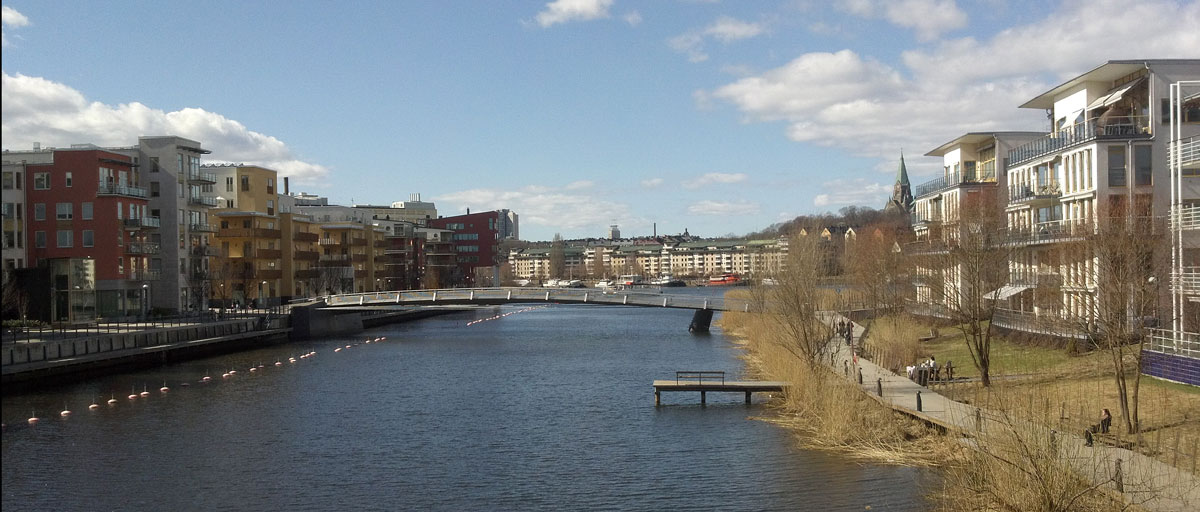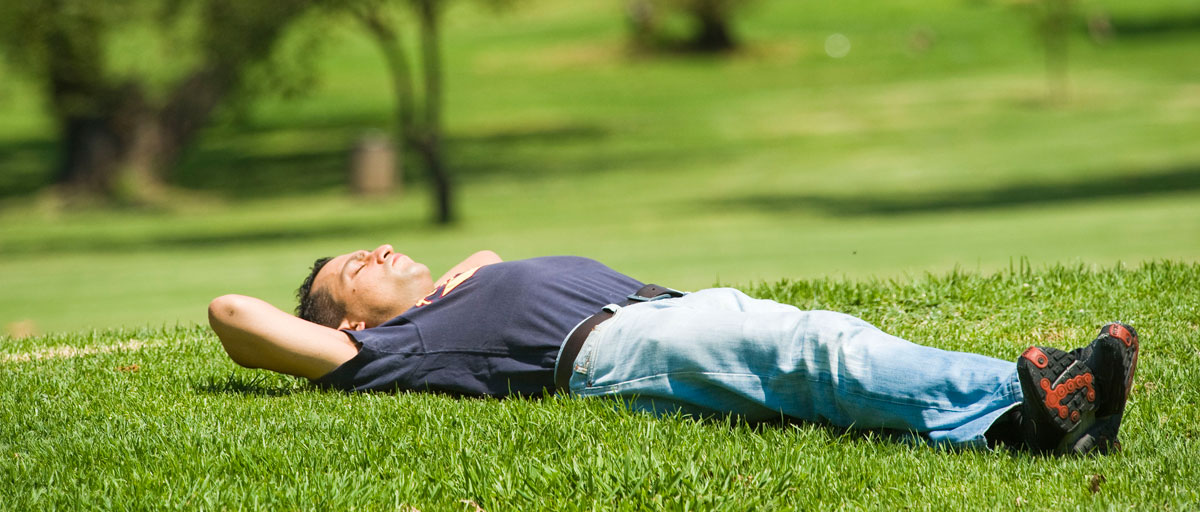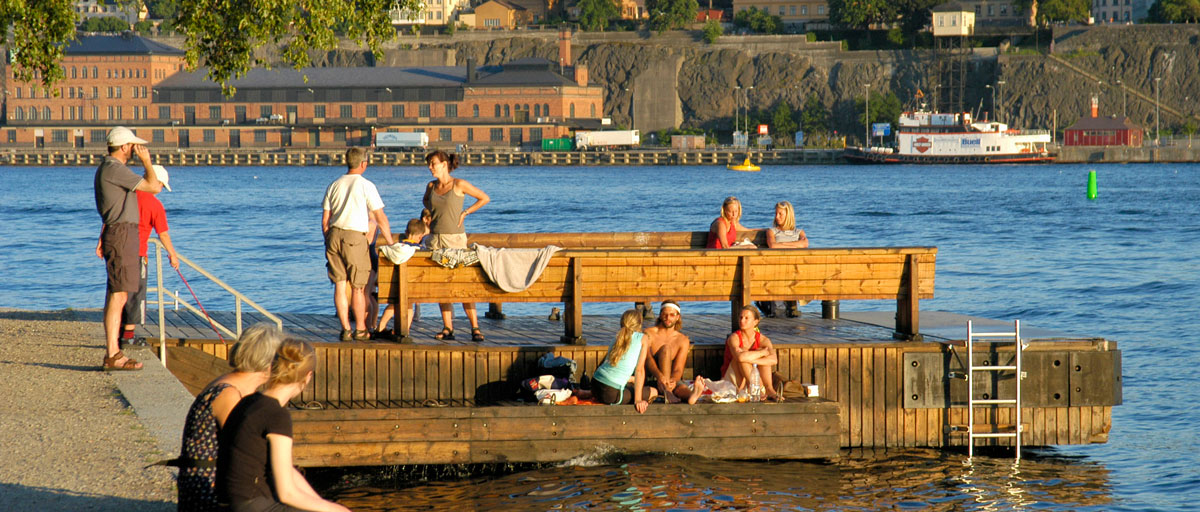Bildtext får vara max två rader text. Hela texten ska högerjusteras om den bara ska innehålla fotobyline! Photo: B. Christensen/Azote
URBAN LANDSCAPES
Location, location, location
Purchasing property in the city close to green space can be more than just visually fruitful. New study finds links between urban green spaces, their multi-functions, and property values
- New PloS one study examines how urban residents’ value urban green spaces
- With Stockholm as a case study, the authors use a sociotope map and real estate data to determine the willingness to pay for areas with particular attributes
- Authors find that aesthetics, social, and nature characteristics had a tendency to increase property values, and green spaces that could be defined by all five considered characteristics at the same time could increase property values by 10.4%
When buying property, there are many aspects to consider. The neighbourhood, if it is central or suburban, and access to nature or schools are a few examples. A view of a park could be seen as a prime location, or maybe it is better to have access to good transportation. All of these factors come into play when choosing what to buy, but how much do these elements actually influence property prices? And which of them are the most attractive features?
A new study published in PLOS ONE by centre associate professor Erik Andersson and colleagues look at the hedonic value, or enjoyable aspects, of social and green areas in an urban landscape. With this study Andersson, along with colleauges from the University of Lodz (Poland) and The Beijer Institute at The Royal Swedish Academy of Sciences, look to further the discussion around the economic value of urban green spaces. Piotr Czembrowski was the lead author of the study.
This study furthers the discussion on the economic value of urban green spaces by assigning monetary value to their perceived character and use values. In doing so, it highlights the need to understand green spaces both as ecological features and social constructs.
Piotr Czembrowski, lead author
“In this study, we used hedonic pricing to estimate the monetary value of various social meanings and use values of green spaces recognized through sociotope mapping,” explains co-author Erik Andersson. A sociotope is a defined space able to provide distinct social functions. The authors use Stockholm as a case study.
Stockholm’s prime real estate
To understand how residents’ value green space in Stockholm, the authors use the sociotope map to define the city’s green spaces into five categories: aesthetics, nature, physical activity, play (e.g. playgrounds), and social.
In one of the largest hedonic pricing studies ever, covering some 175 000 properties, the researchers use real estate data of properties sold from 2005-2015 to understand more about the real estate market. More specifically, they look at: structural information, about the property itself; locational information, such as walking distance to educational, cultural, social, and sports facilities, as well as transport; and environmental, which included walking distance to green spaces.
The authors then analyze the data in two ways: first, looking at green spaces particularly representative for specific singular functions, and second, from the perspective of multifunctionality of green spaces.
When looking at individual green space characteristics, the authors found that aesthetics increased property values, followed by social and nature characteristics. When it came to physical activity features, there was no impact on price, whereas play characteristics decreased property values in Stockholm.
When looking at urban green spaces as multifunctional, the authors found that an apartment that is close to one of the five sociotope mapping categories increased the property’s value. If a property is located close to all five categories, the property value is increased up to 10.4%
First of its kind
This study not only contributes to a better understanding of the economic value of urban green spaces, but also provides further insight into what Stockholmers value in terms of real estate and green space.
“Stockholm offers suitable conditions for performing a hedonic pricing study integrated with a detailed assessment of urban green spaces due to the availability of a detailed sociotope map,” Andersson explains. “Yet surprisingly, the city of Stockholm has been the subject of only a limited number of hedonic pricing analyses, and these have not focused on the perceived functionality of urban green spaces.”
Understanding how and why city residents’ value green space, and also looking at spaces as multifunctional, could not only help shape how real estate buyers conceptualize green space, but can also provide information to city planners who can shape landscapes more desired by its residents.
As Piotr Czembrowski and his co-authors conclude, “This study furthers the discussion on the economic value of urban green spaces by assigning monetary value to their perceived character and use values. In doing so, it highlights the need to understand green spaces both as ecological features and social constructs.”
Methodology
The authors use Stockholm as a case to study hedonic pricing of urban green areas. Building on a previously constructed sociotope map of Stockholm, which is meant to capture the green and social aspects of Stockholm according to its residents; specifically, infrastructure, like playgrounds, and physical aspects, such as distance to green spaces.
With the sociotope map, and using the Sociotope Handbook as a guide, the authors characterize green areas of Stockholm into five groups: aesthetics, nature, physical activity, play, and social. They then looked at this data in two ways: (1) assign all green space to one of the five categories; and (2) identify all categories in a given green space to represent multifunctional landscapes.
To calculate value of a given space, the authors used data from Mäklarstatistik AB, which provided prices, characteristics of the property, and locations of 173,052 properties sold between 2005-2015. Using this data, the authors constructed three groups: structural; locational, and environmental.
Finally, the authors used a model to conduct an econometric analysis for this hedonic pricing study.
Czembrowski, P., Łaszkiewicz, E., Kronenberg, J., Engström, G. and Andersson, E., 2019. Valuing individual characteristics and the multifunctionality of urban green spaces: The integration of sociotope mapping and hedonic pricing. PLoS ONE, 14(3), e0212277.
Erik Andersson is an associate professor who is researching multifunctional landscapes, and leading projects on green infrastructure and how to improve them.











